
What is it for?
Windows Task Scheduler is a handy tool that lets you automate routine tasks and keep your system running smoothly. Admins have full control over what gets scheduled, while regular users can set up tasks too, but with some limits. In places where security is a big deal, Task Scheduler might be locked down to prevent any funny business. To use it safely, it’s best to set up special accounts just for tasks, keep a close eye on who can do what, and check up on things regularly. It’s also smart to only give tasks the bare minimum permissions they need to work, and avoid using super-powerful accounts like SYSTEM if you can help it. Regular users can’t set up tasks that affect the whole system or run with top-level permissions. Don’t forget to review your tasks now and then to make sure they’re still needed and not causing any security headaches.

System Account?
The differences between using the Administrator account and the System account in Task Scheduler:
Admin account:
- Runs tasks with administrative privileges
- Has access to network resources
- Can interact with the desktop
- Tasks run in the user’s context
- Requires password to be stored
System account:
- Highest level of privileges on the local system
- Limited network access
- Cannot interact with the desktop
- Runs in the system context
- No password required
- Better for system maintenance tasks
Choose based on task requirements and security considerations.
Creating a Task
Open Task Scheduler in your administrator account:
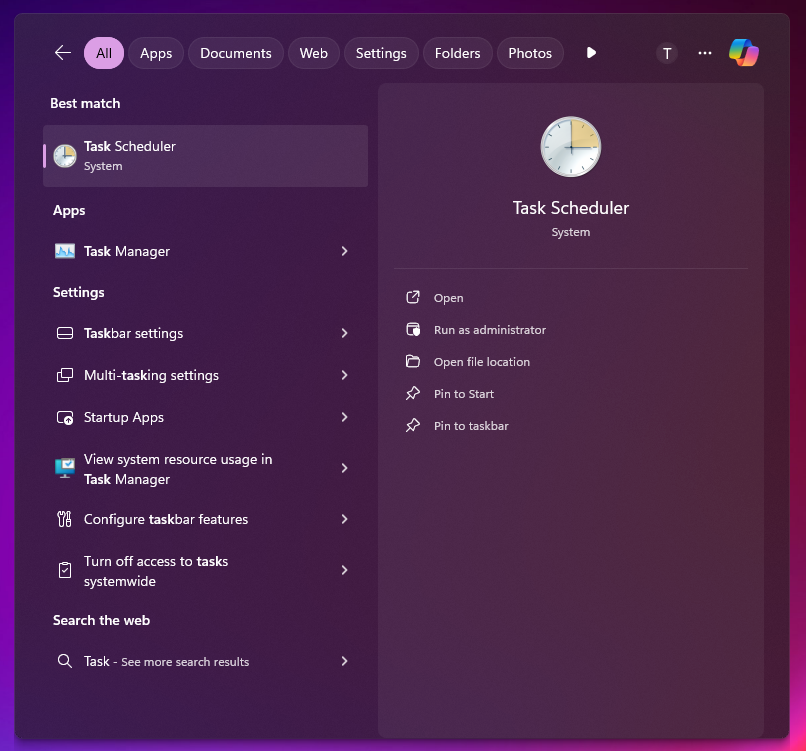
The main GUI window:
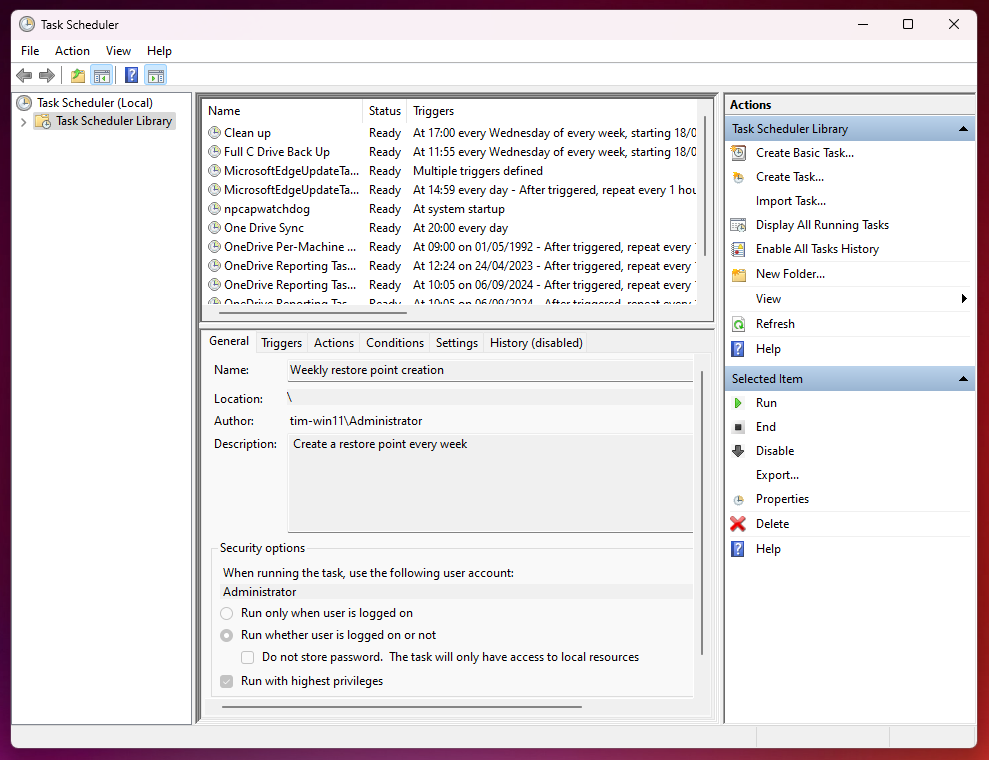
We have three main sections here: On the left the Task Libraries then we have the created tasks which can be selected and show their configuration below and on the right we have Actions.
Under actions on the right select Create a Task:
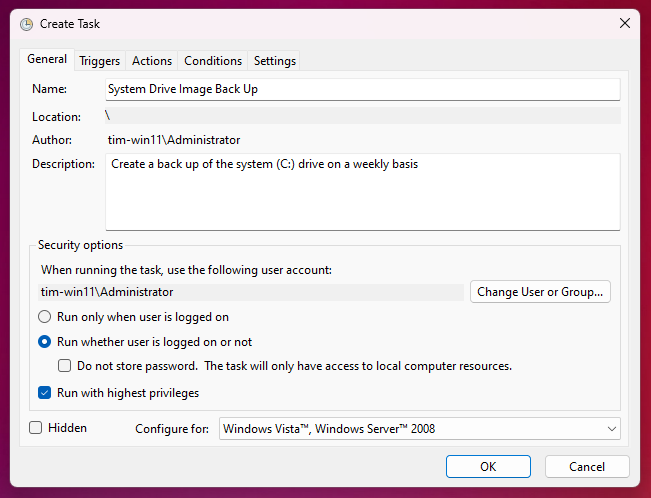
Give the task a name and a description and choose security options. I want this to be run whether the admin is logged in or not and it needs highest privileges.
Then go to the Triggers tab:
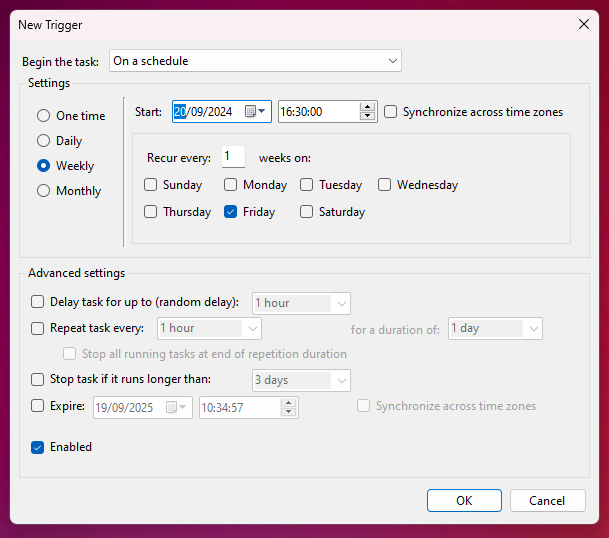
This task is now set to run weekly on Fridays at 16:30 starting on the 20th of September 2024.
For the next stage we need some pre-requisites. We need a batch script that will be the action that is triggered by the scheduler and in turn the batch script will call the Powershell script that will effect the process required. In this case it will be an image back up of the C drive:

@echo off is commented out as it is useful for such a task to have the user notified that it is happening.
The powershell script also has comments to describe the process:
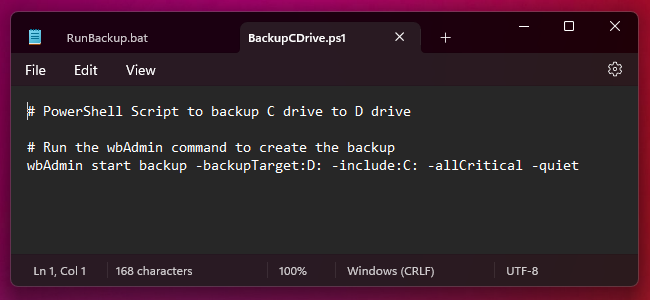
Next up is the Conditions tab:
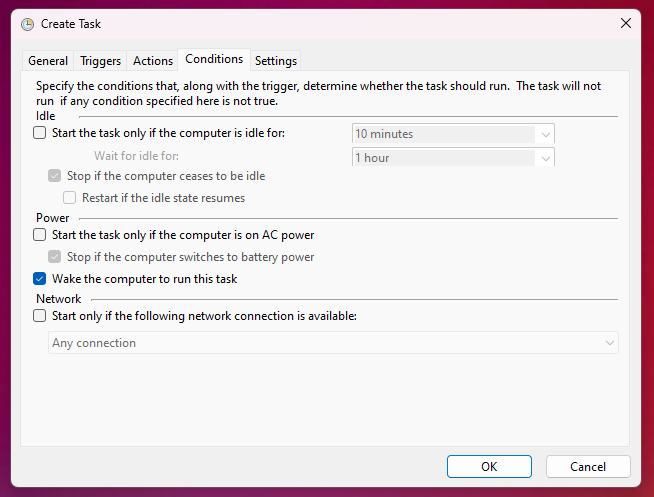
I have selected one option.
Finally, the Settings tab which I leave as default. It is useful to allow the task to be run on demand for testing and for manually starting the task:
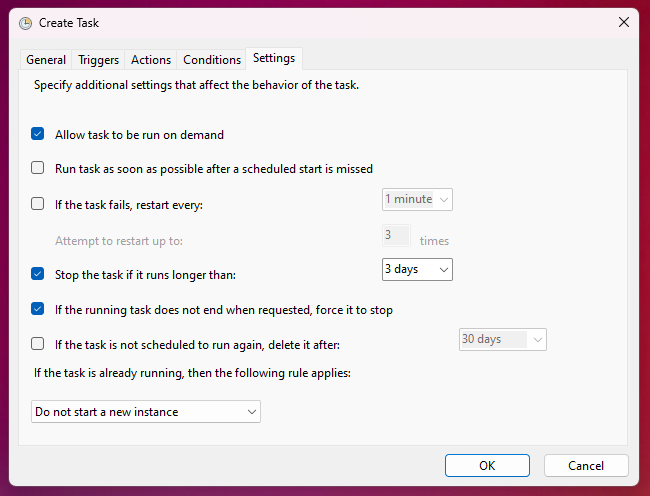
Administrator authentication is required:
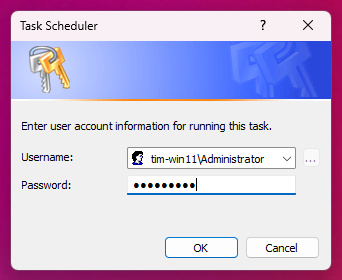
There are many more uses for Task Scheduler but it is not without it’s idiosyncrasies and setting task to run at a set time reminds me of the good old days of setting VHS recorders to automatically record Starsky and Hutch. Sometimes it was successful, other times less so.
However with diligence and a bit of testing it can be an excellent time saving tool.
